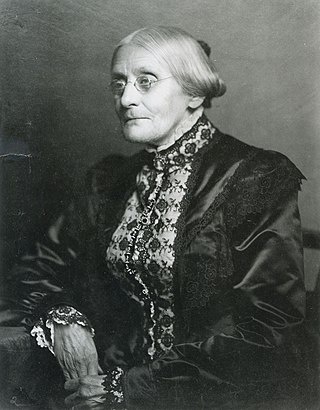
Susan B. Anthony was an American social reformer and women's rights activist who played a pivotal role in the women's suffrage movement. Born into a Quaker family committed to social equality, she collected anti-slavery petitions at the age of 17. In 1856, she became the New York state agent for the American Anti-Slavery Society.

The Declaration of Sentiments, also known as the Declaration of Rights and Sentiments, is a document signed in 1848 by 68 women and 32 men—100 out of some 300 attendees at the first women's rights convention to be organized by women. Held in Seneca Falls, New York, the convention is now known as the Seneca Falls Convention. The principal author of the Declaration was Elizabeth Cady Stanton, who modeled it upon the United States Declaration of Independence. She was a key organizer of the convention along with Lucretia Coffin Mott, and Martha Coffin Wright.
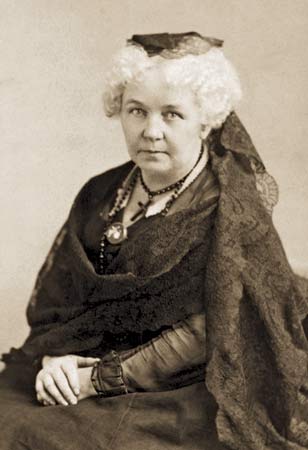
Elizabeth Cady Stanton was an American writer and activist who was a leader of the women's rights movement in the U.S. during the mid- to late-19th century. She was the main force behind the 1848 Seneca Falls Convention, the first convention to be called for the sole purpose of discussing women's rights, and was the primary author of its Declaration of Sentiments. Her demand for women's right to vote generated a controversy at the convention but quickly became a central tenet of the women's movement. She was also active in other social reform activities, especially abolitionism.

The Seneca Falls Convention was the first women's rights convention. It advertised itself as "a convention to discuss the social, civil, and religious condition and rights of woman". Held in the Wesleyan Chapel of the town of Seneca Falls, New York, it spanned two days over July 19–20, 1848. Attracting widespread attention, it was soon followed by other women's rights conventions, including the Rochester Women's Rights Convention in Rochester, New York, two weeks later. In 1850 the first in a series of annual National Women's Rights Conventions met in Worcester, Massachusetts.

Seneca Falls is a town in Seneca County, New York, United States. The population was 8,942 at the 2020 census.

Waterloo is a village and primary county seat of Seneca County, New York, United States. The population was 5,171 at the 2010 census and is now the most populated village in Seneca County. The village is named after Waterloo, Belgium, where Napoleon was defeated. It is the primary county seat of Seneca County, with the other being Ovid as part of a two-shire system established in 1822. Most of the county administrative offices are located in the village. Therefore, many political sources only list Waterloo as the county seat.
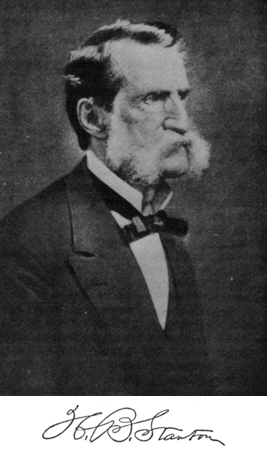
Henry Brewster Stanton was an American abolitionist, social reformer, attorney, journalist and politician. His writing was published in the New York Tribune, the New York Sun, and William Lloyd Garrison's Anti-Slavery Standard and The Liberator. He was elected to the New York State Senate in 1850 and 1851. His wife, Elizabeth Cady Stanton, was a world renowned leading figure of the early women's rights movement.

The Elizabeth Cady Stanton House is a historic house at 32 Washington Street in the village of Seneca Falls, New York. Built before 1830, it was the home of suffragist Elizabeth Cady Stanton (1815-1902) from 1847 to 1862. It is now a historic house museum as part of Women's Rights National Historical Park. It was declared a National Historic Landmark in 1965.

Thomas M'Clintock was an American pharmacist and a leading Quaker organizer for many reforms, including abolishing slavery, achieving women's rights, and modernizing Quakerism.

Amelia Jenks Bloomer was an American newspaper editor, women's rights and temperance advocate. Even though she did not create the women's clothing reform style known as bloomers, her name became associated with it because of her early and strong advocacy. In her work with The Lily, she became the first woman to own, operate and edit a newspaper for women.
The National Women's Rights Convention was an annual series of meetings that increased the visibility of the early women's rights movement in the United States. First held in 1850 in Worcester, Massachusetts, the National Women's Rights Convention combined both female and male leadership and attracted a wide base of support including temperance advocates and abolitionists. Speeches were given on the subjects of equal wages, expanded education and career opportunities, women's property rights, marriage reform, and temperance. Chief among the concerns discussed at the convention was the passage of laws that would give women the right to vote.

Abigail Norton Bush was an abolitionist and women's rights activist in Rochester, New York. She served as president of the Rochester Women's Rights Convention, which was held in 1848 immediately after the first women's rights convention, the Seneca Falls Convention. By doing so, Bush became the first woman to preside over a public meeting composed of both men and women in the U.S.
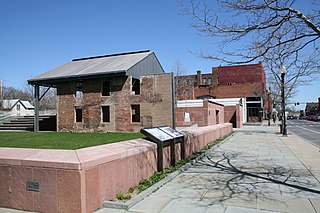
The Women's Rights National Historical Park is a United States National Historical Park in Seneca Falls and Waterloo, New York, United States. Founded by an act of Congress in 1980 and first opened in 1982, the park was gradually expanded through purchases over the decades that followed. It recognizes the site of the 1848 Seneca Falls Convention, the first women's rights convention, and the homes of several women's rights activists.
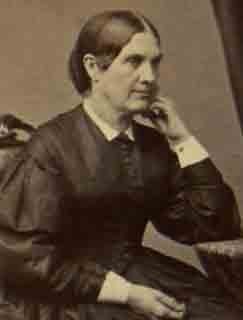
Jane Clothier Hunt or Jane Clothier Master was an American Quaker who hosted the Seneca Falls meeting of Lucretia Mott and Elizabeth Cady Stanton.

The Rochester Women's Rights Convention of 1848 met on August 2, 1848 in Rochester, New York. Many of its organizers had participated in the Seneca Falls Convention, the first women's rights convention, two weeks earlier in Seneca Falls, a smaller town not far away. The Rochester convention elected Abigail Bush as its presiding officer, making it the first U.S. public meeting composed of both sexes to be presided by a woman. This controversial step was opposed even by some of the meeting's leading participants. The convention approved the Declaration of Sentiments that had first been introduced at the Seneca Falls Convention, including the controversial call for women's right to vote. It also discussed the rights of working women and took steps that led to the formation of a local organization to support those rights.
The Ohio Women's Convention at Salem in 1850 met on April 19–20, 1850 in Salem, Ohio, a center for reform activity. It was the third in a series of women's rights conventions that began with the Seneca Falls Convention of 1848. It was the first of these conventions to be organized on a statewide basis. About five hundred people attended. All of the convention's officers were women. Men were not allowed to vote, sit on the platform or speak during the convention. The convention sent a memorial to the convention that was preparing a new Ohio state constitution, asking it to provide for women's right to vote.
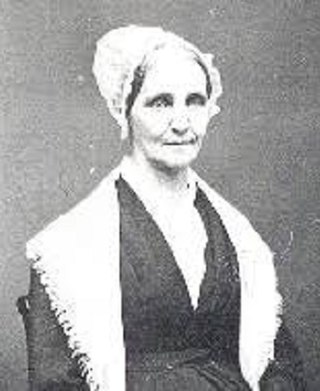
Mary Ann M'Clintock or Mary Ann McClintock (1800–1884) is best known for her role in the formation of the women's suffrage movement, as well as abolitionism.
The Progressive Friends, also known as the Congregational Friends and the Friends of Human Progress, was a loose-knit group of dissidents who left the Hicksite branch of the Society of Friends (Quakers) in the mid-nineteenth century. The separation was caused by the determination of some Quakers to participate in the social reform movements of the day despite efforts by leading Quaker bodies to dissuade them from mixing with non-Quakers. These reformers were drawn especially to organizations that opposed slavery, but also to those that campaigned for women's rights. The new organizations were structured according to congregationalist polity, a type of organization that gives a large degree of autonomy to local congregations. They were organized on a local and regional basis without the presence of a national organization. They did not see themselves as creators of a new religious sect but of a reform movement that was open to people of all religious beliefs.

Eliza Wright Osborne was an American suffragist and feminist, who became vice president of the New York Woman Suffrage Association.

















